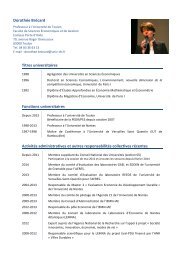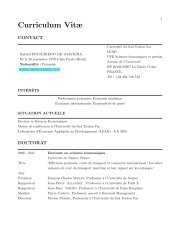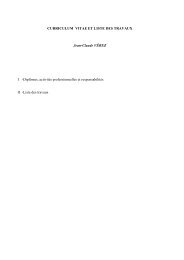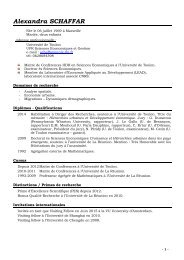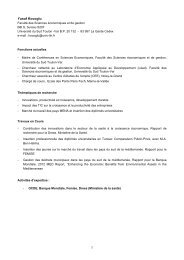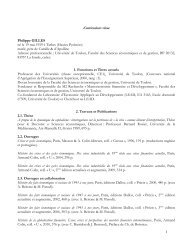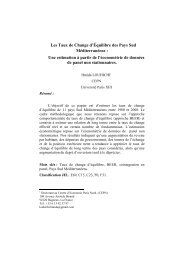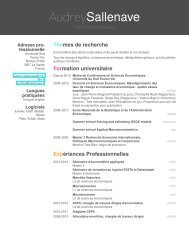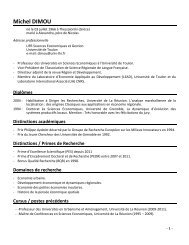The determinants of the number of banks: Empirical results ... - LEAD
The determinants of the number of banks: Empirical results ... - LEAD
The determinants of the number of banks: Empirical results ... - LEAD
Create successful ePaper yourself
Turn your PDF publications into a flip-book with our unique Google optimized e-Paper software.
V. Conclusion<strong>The</strong> present paper analyzed <strong>the</strong> <strong>determinants</strong> <strong>of</strong> <strong>the</strong> <strong>number</strong> <strong>of</strong> <strong>banks</strong>. We formulatehypo<strong>the</strong>ses relative to <strong>the</strong> <strong>number</strong> <strong>of</strong> <strong>banks</strong>, firm‟s characteristics and Bank relationshipscharacteristics.For Small and Medium Business, <strong>the</strong> relationship with a bank is <strong>of</strong>ten <strong>the</strong> only way toobtain outside financing. In fact, Small and Medium Business are known to be veryopaque, so <strong>banks</strong> can solve this problem <strong>of</strong> asymmetric information by developing creditrelationships. Banks produce information about firms and use it in <strong>the</strong>ir credit decisions.<strong>The</strong>ories <strong>of</strong> financial intermediation show that single bank relationship is most efficientaccording to delegated monitoring model. Firms should have a lower cost <strong>of</strong> credit andmore availability <strong>of</strong> funds. But in recent years, various Small and Medium Business choosea multiple bank relationship. By borrowing from more than one bank, <strong>the</strong> firm can solve<strong>the</strong> hold-up banking problem. Indeed, in <strong>the</strong> case <strong>of</strong> a single bank relationship, a bankwhich lends to a firm learns more about <strong>the</strong> borrower‟s characteristics than o<strong>the</strong>r <strong>banks</strong> do.As a consequence <strong>of</strong> this asymmetric information, <strong>the</strong> bank acquires an informationalmonopoly over <strong>the</strong> firm. <strong>The</strong> credit cost arises if <strong>the</strong> bank uses its superior information. Inthis circumstance, multiple banking can reduce <strong>the</strong> risk <strong>of</strong> informational capture.Fur<strong>the</strong>rmore, multiple banking can also appear as a protection against bank liquidity risk.In order to study <strong>the</strong> <strong>determinants</strong> <strong>of</strong> <strong>the</strong> <strong>number</strong> <strong>of</strong> <strong>banks</strong>, we use a sample <strong>of</strong> French data.Tests validate hypo<strong>the</strong>ses 1, 3 and 4. Indeed, our <strong>results</strong> show that firm‟s size positivelyinfluences <strong>the</strong> <strong>number</strong> <strong>of</strong> <strong>banks</strong>, whereas liquidity and pr<strong>of</strong>itability decrease this <strong>number</strong>.Moreover, firms exposed to credit rationing are characterized by a more important <strong>number</strong><strong>of</strong> <strong>banks</strong>. Hypo<strong>the</strong>sis 2 is not validated. Indeed, <strong>the</strong> duration <strong>of</strong> <strong>the</strong> main bank‟srelationship has no a significant effect on <strong>the</strong> <strong>number</strong> <strong>of</strong> <strong>banks</strong>.My data search is actually in progress. As a consequence, ano<strong>the</strong>r part will be added to thisarticle as soon as I collect more data. This part is about <strong>the</strong> impact <strong>of</strong> <strong>the</strong> <strong>number</strong> <strong>of</strong> <strong>banks</strong>„effects on price and non price terms <strong>of</strong> <strong>the</strong> loan contract: credit cost, availability <strong>of</strong> creditand guarantees.






